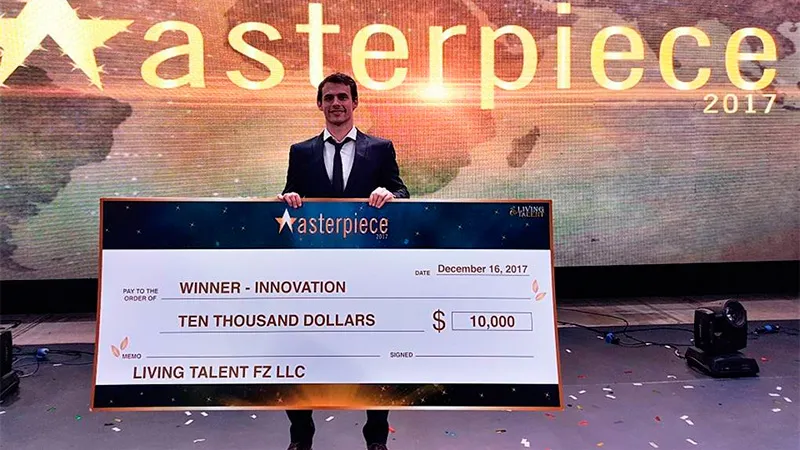The Entre Rican biomedical engineer already won two awards in Argentina and one in Dubai;Facundo Noya is 24 years old and created a template with sensors that can avoid injuries to patients with diabetes;How did the project arise?
It was February 2016 and Facundo Noya accompanied his father who was admitted to a hospital in Concordia, Entre Ríos.A diabetic patient had entered in the next bed that had stuck a bug in his foot and had infected him.
In just one week that woman, who had normally walking to the room, had amputated her leg.
"It was very shocking. I began to investigate and it turns out that diabetes patients lose sensitivity in the limbs and, if hurt, do not recover. Systemic infection is the main cause of amputation in the world," he explained.
With this in mind, Ebers created, an intelligent template that is being tested in Córdoba and Buenos Aires, and for which he already won three awards, here and abroad, for approximately $ 400 thousand.
Prevent the lesion
Noya is from San José de Feliciano, in Entre Ríos, and studied biomedical engineering at the Faculty of Exact Sciences of the National University of Córdoba (UNC).The template was his grade thesis, along with a partner named Nicolás Guglielmone, but then only he continued with the project.
"People with diabetes lose their feet sensitivity and, when the blood vessels are broken, they do not reach nutrients, then, if they hurt, they do not recover and, to avoid an ulcer, doctors amputate.
The only way to prevent the lesion is what the template that has pressure, temperature and humidity sensors does.Keeps the microclimate foot and detects whether there are stones or a strange object.The template looks normal, but has sensors that send data to the cell phone, "he said.
How does the template work?
In the market there are sensorized templates.However, they are designed for high performance sport.They are usually very sophisticated and serve to carry out studies in a specific place, without analyzing the constant march of the patient.Another big difference is the cost since the sensorized cost between US $ 10,000 and 15,000, while EBERS are made with national materials, which would significantly reduce their value.
Financing
According to this, in 2017, Noya was looking for financing and did quite well.In August, he won the Emprende Consciousness contest, an initiative organized by the Ministry of Production and the INVAP Foundation.He spent two weeks in Bariloche accelerating the project with technicians and, in business matters, with the Argentine Academy Emprende.
Then, in December, he won US $ 10,000 in the innovation category of the Masterpiece contest, organized by the Livingtalent company in Dubai.Finally, he closed the year with another potential triumph dreams of the City of Buenos Aires, where he became a creditor of $ 200,000 in the seed.
Improve the project
With two prototypes in tow it is designing the third that would be validated in mid -2018 by patients from the Rawson and Misericordia hospital, of Córdoba, and the Santa Catalina Clinic, of Buenos Aires.
"Now we are making improvements in the app and the sensor template to test the third prototype in patients. We have an agreement with the hospitals by which we feedback from doctors and patients who tell us their difficulties and what happened to them throughThey were amputated, "he said.
In addition to this feedback, Noya works with Juan José Ortiz and Bernardo Villegas of the Argentine Foundation of Nanotechnology (FAN) to manufacture the sensors, with the Drimcom incubator for the software and with an electronic engineer forImprove electronics.
Beyond the awards, they also applied to the seed fund of the Ministry of Production, which gives honor loans for $ 250,000, and to a FAN pre-semilla and aim to accelerate the project in Singularity University.


